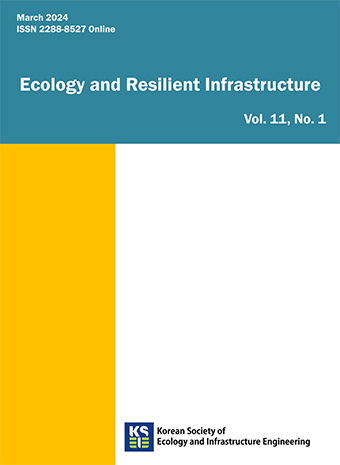Original Article
Abstract
References
Information
IUCN (International Union for Conservation of Nature). 2009. No time to lose: Make full use of nature-based solutions in the post-2012 climate change regime. Position paper on the Fifteenth session of the Conference of the Parties to the United Nations Framework Convention on Climate Change (COP 15).
Pauleit, P., Zölch, T., Hansen, R. and Randrup, T.B. 2017. Nature-based solutions and climate change - four shades of green. Ch. 3, Kabisch, N. et al. (eds.), Nature‐based solutions to climate change adaptation in urban areas, theory and practice of urban sustainability transitions. Springer Link.
10.1007/978-3-319-56091-5_3- Publisher :Korean Society of Ecology and Infrastructure Engineering
- Publisher(Ko) :응용생태공학회
- Journal Title :Ecology and Resilient Infrastructure
- Journal Title(Ko) :응용생태공학회 논문집
- Volume : 7
- No :1
- Pages :15-25
- Received Date : 2019-12-31
- Revised Date : 2020-02-01
- Accepted Date : 2020-02-06
- DOI :https://doi.org/10.17820/eri.2020.7.1.015




 Ecology and Resilient Infrastructure
Ecology and Resilient Infrastructure







